Augmented Diminished Minor Major and Perfect Intervals Review
Music theory nuts: how intervals define the distance in pitch between two notes
If we were to say the word 'interval' to you, what would your first idea be? The theatre? Ice cream? (With you lot on that i.)
The basic lexicon definition of the word interval is a gap or space between two things, and in musical terms, that'southward exactly what it represents: an interval is the distance in pitch between two notes.
Intervals make for a fairly wide topic, so in this guide, nosotros'll start with the basics and look at how to create and work out simple intervals. Substantially, there are v types of interval: major, minor, perfect, augmented and diminished. It's the first three of these types that we'll be examining hither.
When naming musical intervals, in that location are two things to consider: quality and altitude. Quality refers to the type of interval (major, minor, perfect, etc), while distance refers to the number of notes spanned by the interval. This can have the form of unison (both notes the same - ie, no interval), seconds, thirds, fourths, fifths, sixths, sevenths or octaves. You lot might have an interval of a perfect 4th or a minor tertiary, for example.
What tends to misfile people, though, is that the number of semitones spanned by an interval doesn't ever correspond to the number in its name - for instance, a major third is really a span of iv semitones, while a perfect fifth covers seven!
To sympathize why this is, we need to look at the relationships between the degrees of the scale that the notes at either terminate of the interval are taken from - our mission is to articulate upward some of the confusion and go your interval identification skills polished up to a dazzling shine. Here nosotros go…
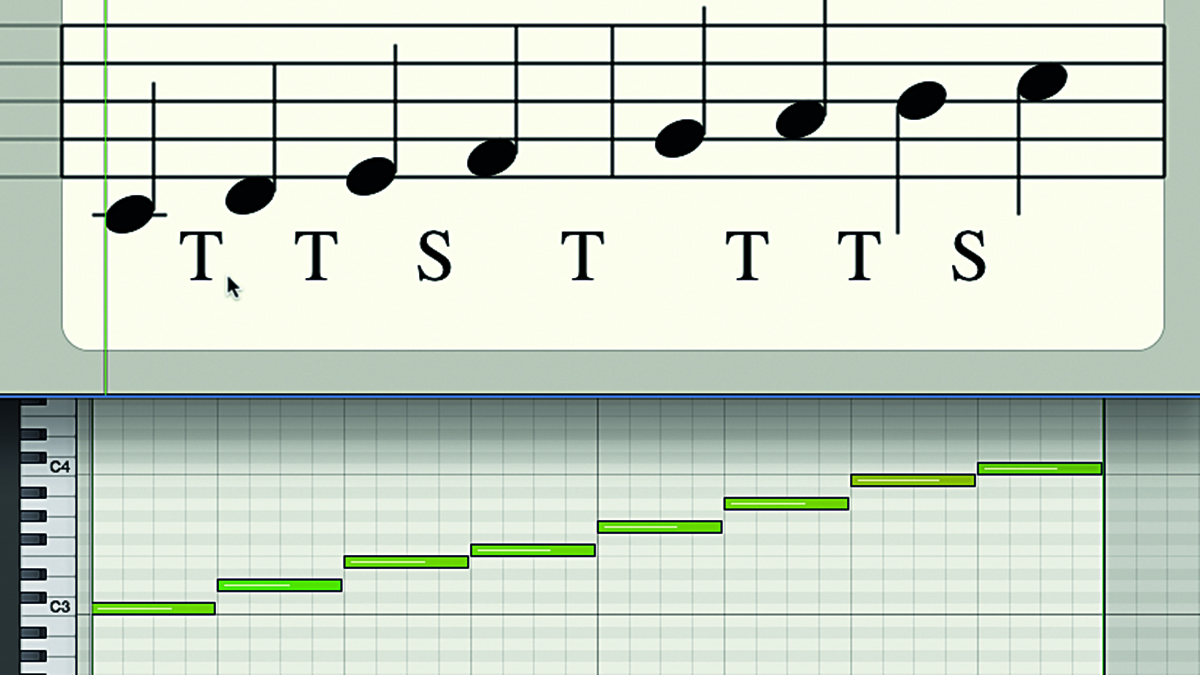
Step i: Let's await once again at the interval design for the major scale. Above is C major (C-D-Eastward-F-Thou-A-B-C), and its pattern is T-T-S-T-T-T-S, so the interval between C and D is a tone, between D and Due east is some other tone, between E and F is a semitone, and so on.
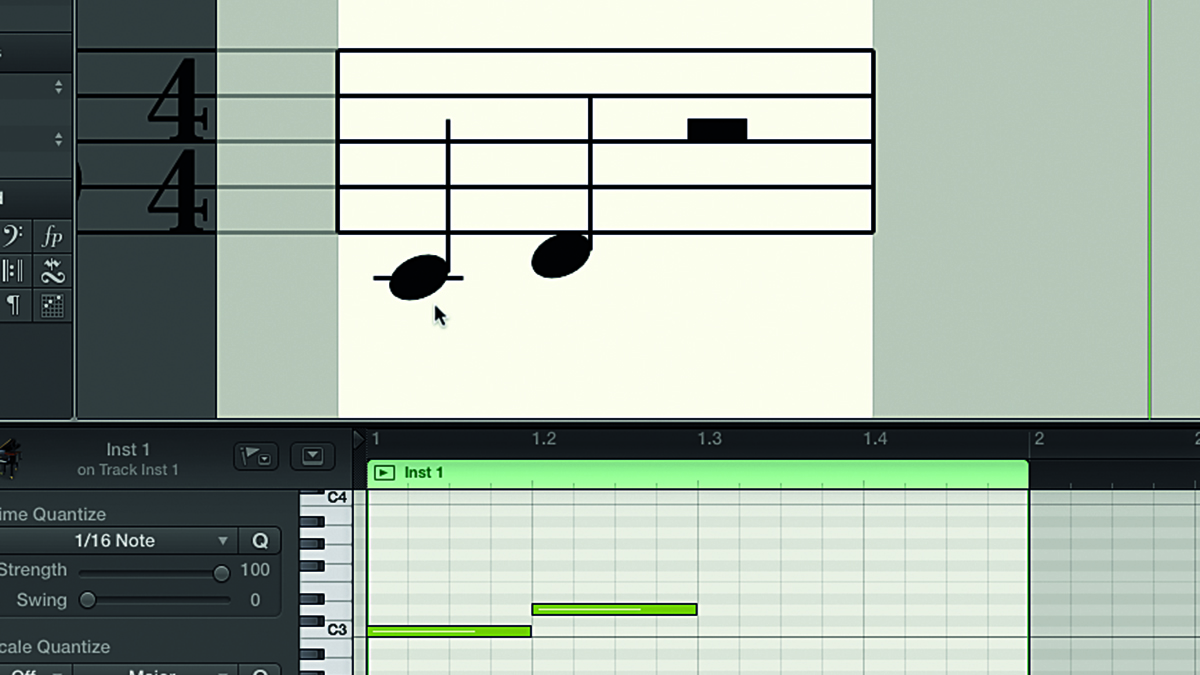
Step 2: As well as beingness represented past T (tone) or S (semitone), the intervals between the notes tin too take other names. Let'due south wait at the showtime two notes of the calibration: C and D. In lodge to piece of work out what the particular interval between whatsoever two notes might exist, begin by counting the letter names from the kickoff note to the final note.

Step 3: In this instance, we have C - one; and D – two. Ii notes hateful the interval is a second of some kind. Next, nosotros determine the interval's quality - whether information technology'southward major, modest, perfect, etc. Look at the lower notation and construct a major scale starting on it. The interval betwixt the tonic (root note) of a major scale and any other note in information technology is e'er either a major or perfect interval.
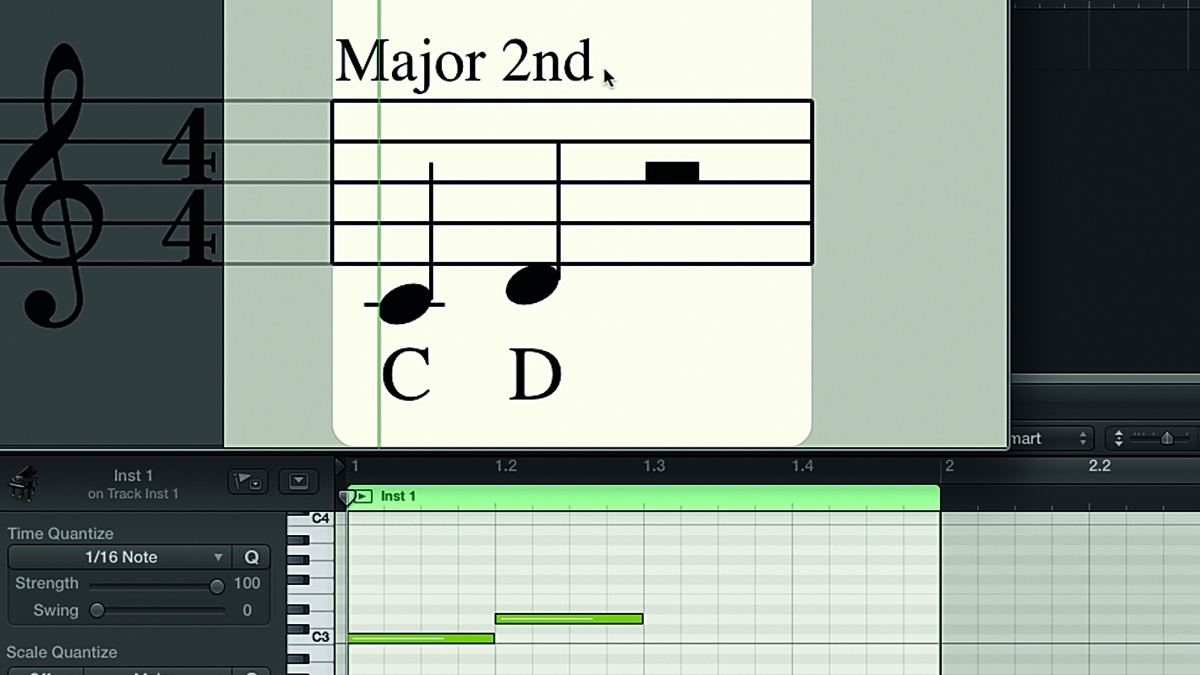
Step four: The 'perfect' intervals are the unison, fourth, fifth and octave. The remaining intervals of the major scale - the 2nd, third, sixth and 7th - are known as 'major' intervals. We've determined that this interval is a second, and we know that the upper note D is part of the C major scale, and so the interval is called a major second.
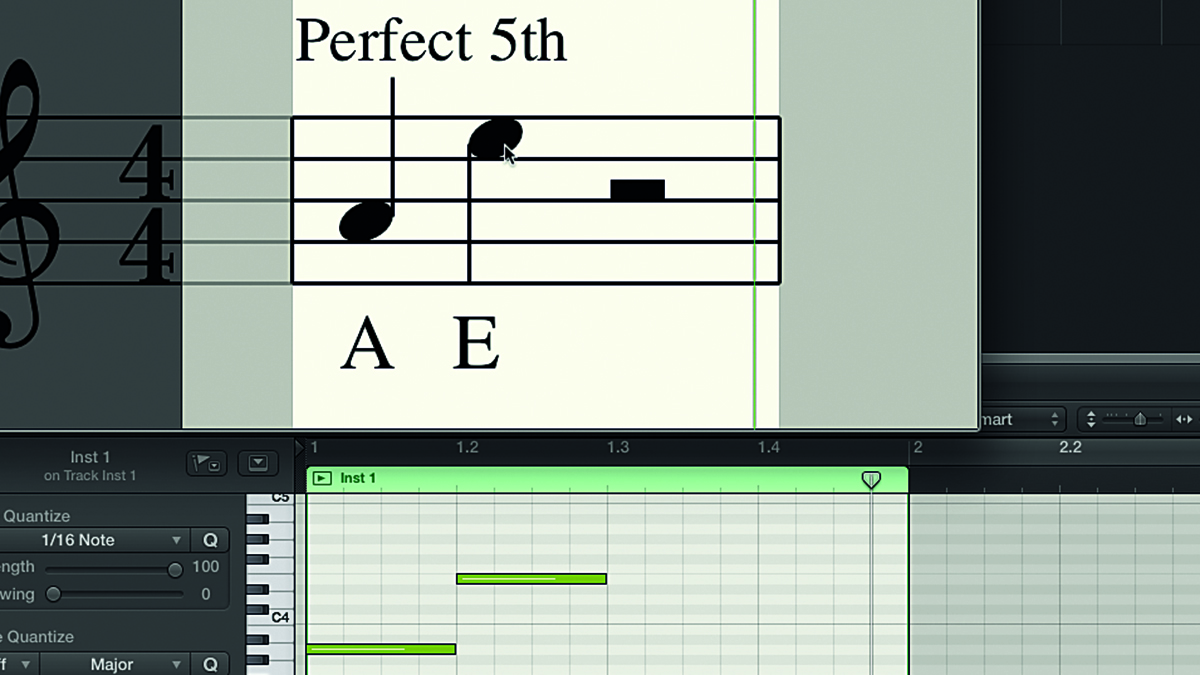
Step five: The interval shown here is A to E. Counting the letters between the two notes gives the states A, B, C, D, E, adding up to a total of five notes. This interval is therefore some kind of fifth. Since E is part of the A major calibration (A, B, C#, D, Due east, F#, Thousand#), we can safely say the interval is a perfect fifth. But what if the upper note is not part of the major scale congenital from the lower annotation?
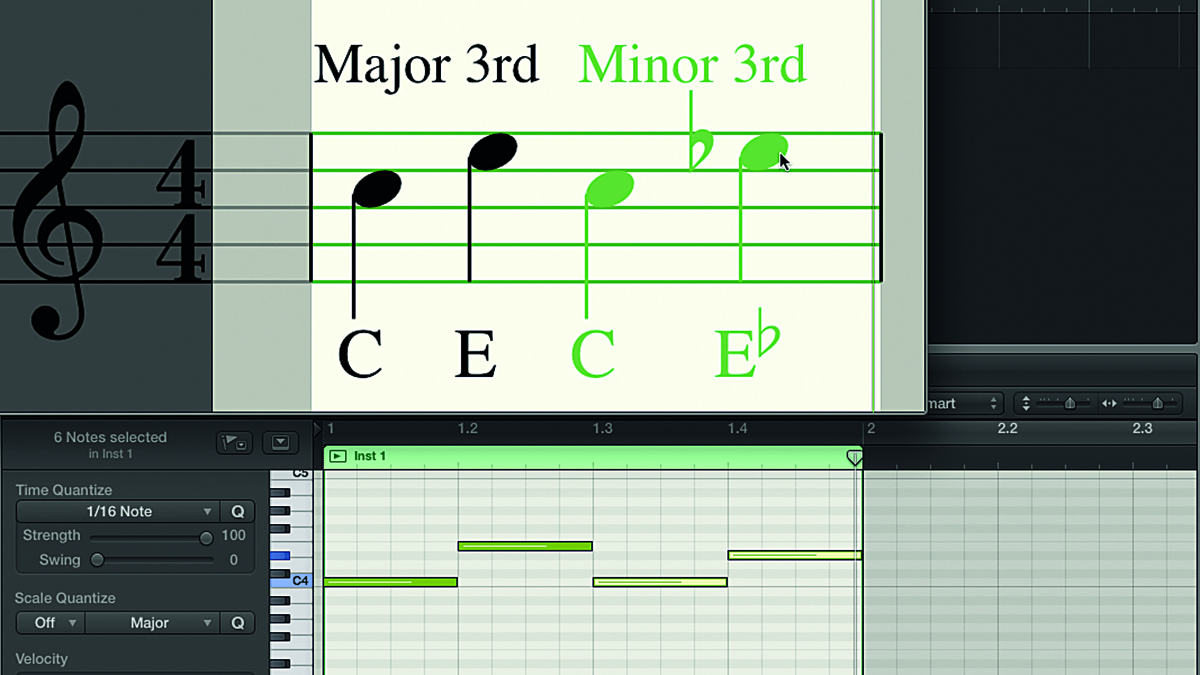
Step 6: If the interval is a semitone narrower than a major one, information technology'due south a minor interval. C to Due east is a major third, as information technology covers three note letters (C, D, East) at the first of the C major scale. C to Eb covers the same 3 note letters, so it's still a tertiary, merely because information technology's a semitone narrower than a major third, it's a minor tertiary. Perfect intervals occur in both major and minor scales.

Step seven: Intervals tin go downwardly equally well as up - the direction of the melody doesn't thing, every bit the distance between the notes is the same. Here'south a loftier F followed by a low C. The interval is withal a perfect fourth (F, East, D, C = four letter names). The distance between the notes is still v semitones, regardless of whether you approach from the C ascending or the F descending.
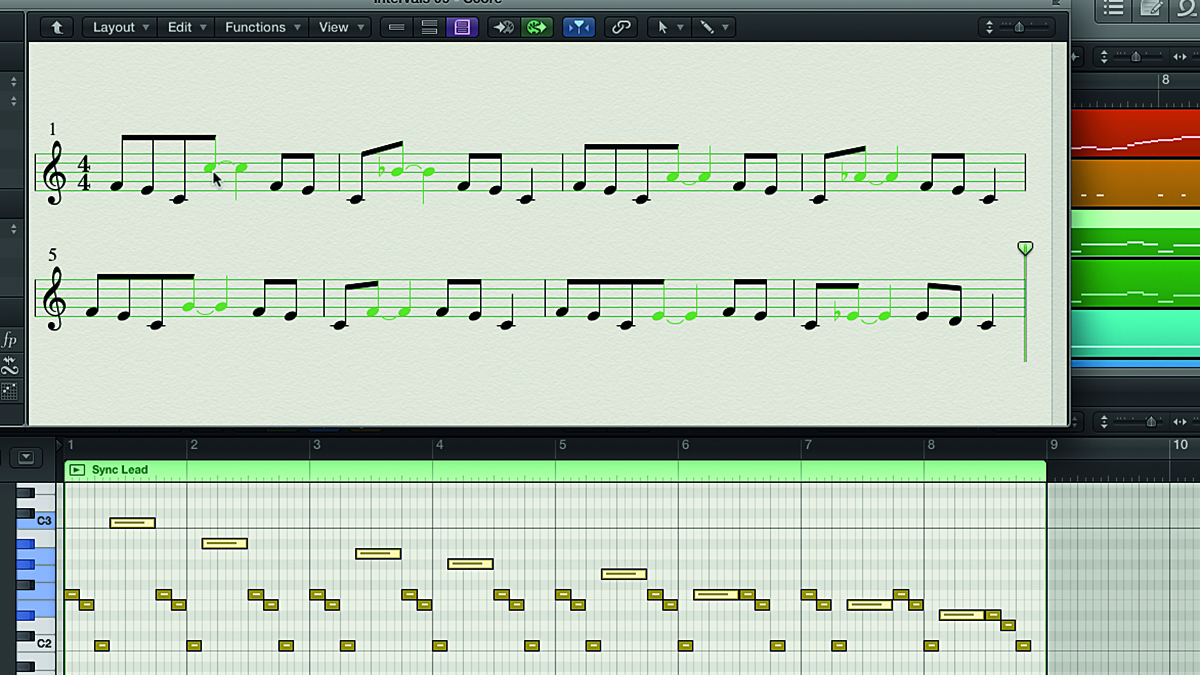
Pace 8: To look at intervals in the context of a production, here's a runway fabricated upward of drums, a bass synth and a pb line. The atomic number 82 synth plays a repeating motif with a different height annotation each time. Each time round, the top annotation is a semitone or ii lower, creating a different interval between it and the low C notation that comes earlier it.
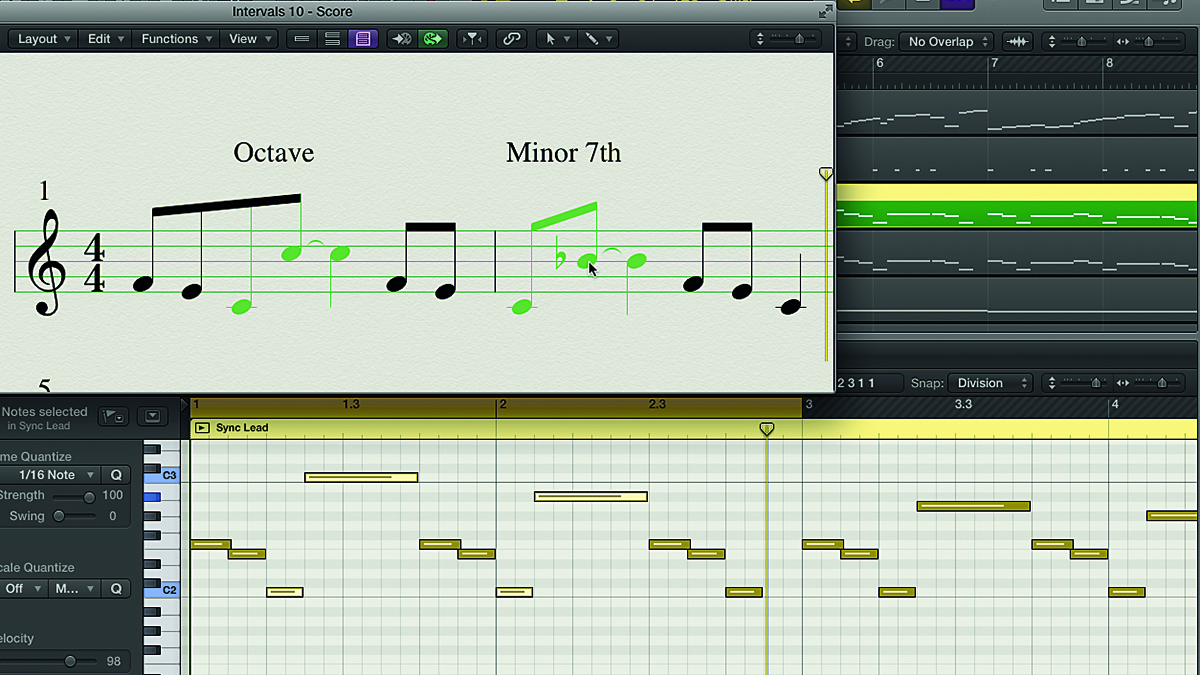
Step nine: The beginning interval, in bar ane, is a total octave leap from C2 to C3. In bar 2, nonetheless, the C2 is followed by a Bb2. Counting C to B, ignoring flats and sharps, gives the states vii notes (C, D, E, F, Thousand, A, B), and since the notation is a Bb, that makes the interval one semitone narrower than a major 7th (11 semitones), giving us a minor 7th (ten semitones).
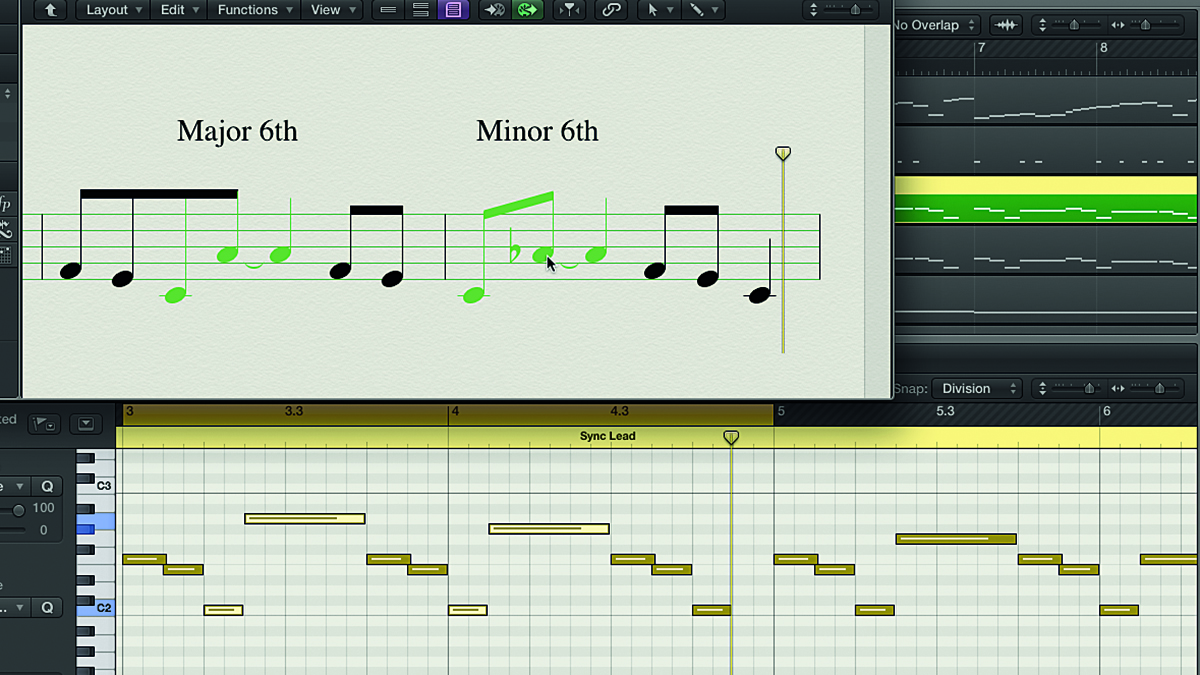
Step 10: Bar three has a C2 to A2 interval - a major sixth. Bar 4 drops the upper note one semitone to an Ab, narrowing the interval from a major to a minor sixth. The last iv confined contain a perfect fifth (C to G) in bar five, a perfect quaternary (C to F) in bar 6, a major third (C to E) in bar 7 and a minor third (C to Eb) in Bar eight.
Interval overview
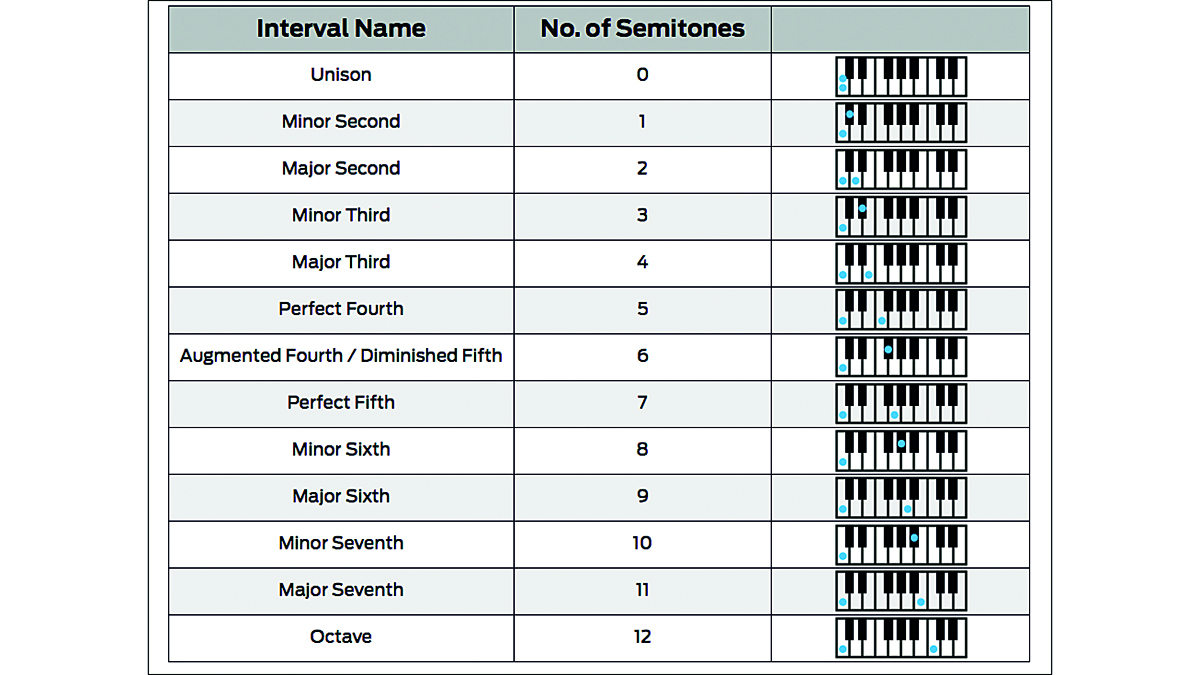
Recommended listening
There are enough of well-known tunes whose commencement 2 notes tin exist used to help recognise and place simple intervals. Almost of these melodies use the named intervals at the very kickoff, showing how useful intervals can exist in setting the mood of a piece.
- Modest 2nd - Jaws Theme
- Major 2nd - Happy Birthday
- Minor tertiary - Greensleeves
- Major tertiary - When The Saints Get Marching In
- Perfect 4th - Here Comes The Helpmate
- Augmented 4th/Diminished 5th - Simpsons Theme
- Perfect fifth - Twinkle Twinkle Trivial Star
- Minor 6th - In My Life (The Beatles)*
- Major 6th - My Bonnie Lies Over The Sea
- Pocket-size 7th - Original Star Expedition Theme
- Major seventh - Don't Know Why (Norah Jones)
- Octave - Somewhere Over The Rainbow
Pro tips
Inverted intervals
Not to be confused with descending intervals, inverted intervals are what you get if you shift either the lower notation up one octave or the upper note down one octave, swapping their relative positions. When you do this, major intervals become modest, minor intervals become major and perfect intervals remain perfect. The interval number and the number of its inversion e'er add up to nine - if low C to high E is a major third, low E to high C must be a modest 6th (three+6=ix).
Melodic, harmonic and chemical compound intervals
Melodic intervals are made upwards of 2 notes played i after the other, whereas harmonic intervals are made upwards of notes played simultaneously. Compound intervals are intervals wider than an octave. A major tenth (or a 'chemical compound major third') spans 16 semitones (eg, C2-E3), equal to one octave plus one major third.
Source: https://www.musicradar.com/how-to/music-theory-basics-intervals-explained
0 Response to "Augmented Diminished Minor Major and Perfect Intervals Review"
Post a Comment